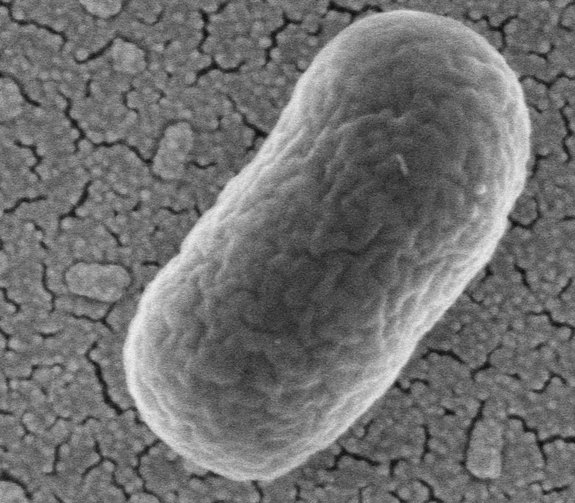Incredible Tech: How to Engineer Life in the Lab


Editor's Note: In this weekly series, LiveScience explores how technology drives scientific exploration and discovery.
The year was 2003, the place MIT. A handful of engineers, computer scientists and a molecular biologist convened, intent on answering a simple question: What if biology were faster, cheaper and more predictable to engineer?
The molecular biologist was Pamela Silver, of Harvard Medical School. Along with biological engineers Drew Endy and Randy Rettberg, then at MIT, Silver taught an elective course in which students built cellular circuits using genetic parts, just as one might build a computer chip out of transistors. The approach would form the foundation of the field known as synthetic biology.
"As the ability to sequence and synthesize DNA gets ever cheaper, we can treat biology more like true engineering," Silver told LiveScience.
From making bacteria that replace blood, to creating new biofuels, to piecing together a simple organism not found in nature, synthetic biologists design and create new biological parts, devices and systems, or re-design systems in nature for useful purposes.
Using this powerful approach, scientists have begun to design microbes that produce food or biofuel, make medicines and sense toxins in the environment. The technology holds great promise, or ethical pitfalls, depending on how humanity applies it. [Biomimicry: 7 Clever Technologies Inspired by Nature]
Standardized parts
Get the world’s most fascinating discoveries delivered straight to your inbox.
The field has its roots in advances in molecular biology that allowed scientists to manipulate DNA, the genetic instruction inside all cells. Over the past 30 years, researchers have developed tools for cutting-and-pasting DNA, producing vast copies of it, sequencing it, and ultimately synthesizing it from scratch.
Thanks largely to increases in speed and reductions in cost, DNA tech can now create standardized genetic parts that can be combined inside simple cells such as bacteria or yeast.
What started as a month-long elective course at MIT soon grew into the annual International Genetically Engineered Machine, or iGEM, competition. Teams of undergraduates compete to build biological systems that function inside living cells, using genetic parts known as BioBricks, which fit together like LEGO bricks.
A team from the University of Edinburgh developed a bacterial sensor that detects arsenic contamination, and produces a change in acidity, or pH, in response to the amount of the toxin present. Students at the University of California, Berkeley created "Bactoblood," a blood substitute made from E. coli bacteria. And a team from the University of Cambridge, in England, engineered microbes that produced a rainbow of different color pigments that could be used, for example, to detect healthy poop.
State of the art
"I have a feeling they’ve done it," Silver said, referring to Venter's attempt to create the minimal organism. "They developed new technologies for how to assemble DNA, which have become very useful," she added. [Unraveling the Human Genome: 6 Molecular Milestones]
One of the founding principles of synthetic biology is something called a chassis organism — a bit like a breadboard in electronics. Genome scientist Craig Venter, who led one of the two teams that sequenced the first human genome, is working on such a "minimal organism." In 2010, Venter's team succeeded in creating the first synthetic cell, by making a modified version of a bacterial genome, assembling it inside yeast, and inserting it into another bacterium.
Other projects have more direct applications. For example, the multi-university research center Synberc is developing a synthetic version of the anti-malaria drug artemisinin, which is cheaper and more effective than the current version derived from plants.
The field also has the potential to transform computing. Earlier this year, Endy and his colleagues at Stanford developed the biological equivalent of a transistor. They created genetic parts called transcriptors, which block the flow of enzymes that copy DNA instructions, and arranged them to perform computations inside cells.
Going forward, Silver said one of the biggest challenges the world will face is finding ways to increase plant biomass for food. By increasing photosynthesis and carbon fixation (converting the atmosphere's carbon dioxide into an organic form), synthetic biology will play a big part in solving the problem, she said.
"We're moving into an economy that gets away from synthetic chemicals and into natural synthesis of chemicals," Silver said, "using our greatest natural resource, the sun."
Double-edged sword
Yet despite the field's promise, designing and tinkering with living organisms poses ethical questions.
There's the safety of the researchers who work with synthetic organisms to consider, as well as the impacts those organisms may have on the environment at large. For instance, a synthetic organism might unintentionally infect a researcher and make them ill, much as many existing microbes do. The concept of a genetic "kill switch" has been proposed as a way to control synthetic organisms that go awry outside the lab, but that wouldn't stop intentional misuse of the technology.
Many people, from bioethicists to philosophers to the scientists themselves, are exploring these questions. Silver encourages people to keep an open mind about the potential uses and abuses of this science.
"What's dangerous," Silver said, "is if people are trying to present only one viewpoint."
Follow Tanya Lewis on Twitter and Google+. Follow us @livescience, Facebook & Google+. Original article on LiveScience.




